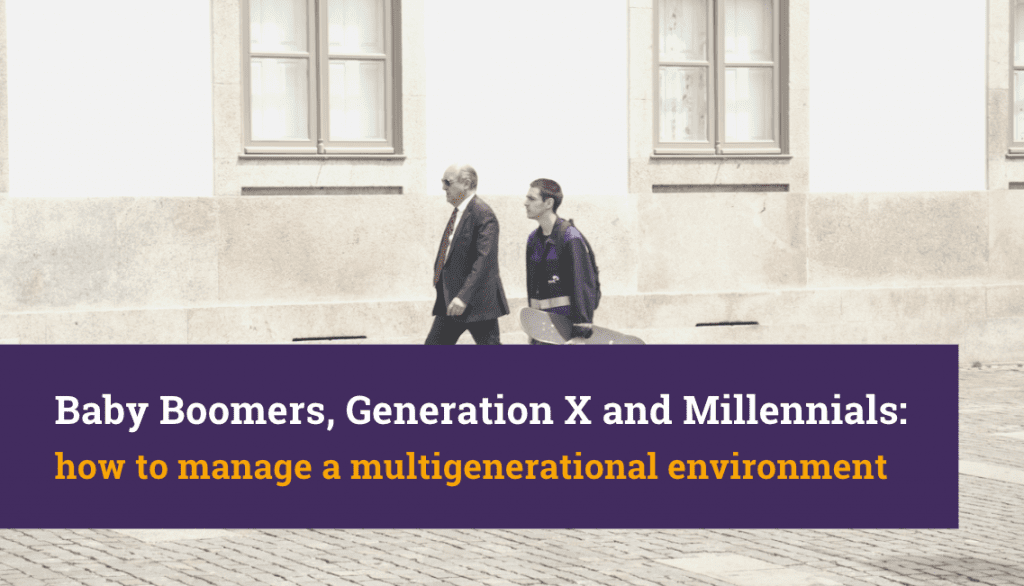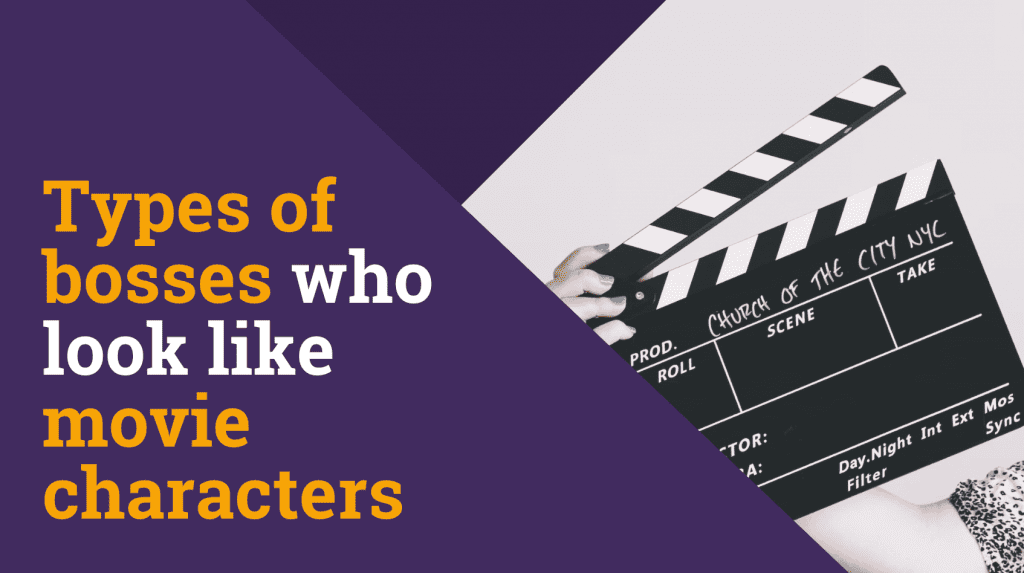- Baby Boomers
- Generación X
- Millennials
Each of these generations has been influenced by its time: family situation, historical events, economic conditions, and many other factors that have conditioned its personality and behavior.
Since they are very different groups, it is important that companies strive to understand what motivates and influences each of them. We must be aware when managing them that incentives and leadership styles are not equally effective for each generation.
Three generations separated by times, but united in the same labour market, this is the challenge for Human Resources professionals. How can we ensure that these different generations coexist effectively in the same organization?
In today’s article we talk about these 3 generations, what characterizes them and how to manage them. If you are a professional in the HR sector and want to integrate in your business employees of different generations This is your article!

What characteristics define the 3 generations?
They were born in the years after World War II, and are so called because of the exceptional increase in birth rates that occurred during those years.
They are used to working for many years in the same company, even a lifetime. For this reason, it is said of them that seek safety and stability at work. They are generally competitive, committed and faithful to their professional lives.
For many of them, work is the most important. They often value traditions, productivity, status symbols and vertical growth in a company.
2) Generación “X” (1965 – 1980)
Their name comes from the fact that they entered the labour market at a time of great uncertainty, after the end of the Cold War.
Generation X is the transition generation. These people have experienced great historical changes: analog life in their childhood and digital life in their maturity, the arrival of the Internet, the fall of the Berlin Wall…
They are stable and independent people. They like to work under minimal supervision; they are usually their own bosses. They attach less importance to hierarchy and traditions, and are more collaborative than baby boomers.
3) Generation Y or Millennials (1981 – 1999)
Millennials were born in a time of great economic prosperity. They are recognized as enterprising, idealistic, goal-oriented, impatient, tenacious and tolerant people.
They do not conceive of reality without technology and easily adapt to the changing pace of things.
They have full confidence in their abilities because they are the best prepared generation academically. Therefore, they persevere to work on what they are passionate about and are constantly looking for opportunities for personal and professional growth.
For this generation, quality of life is a priority. They see previous generations as workaholics. They prioritize work-life balance.

How should we manage different generations?
There are many benefits to creating a diverse and collaborative environment. Therefore, we give you 5 strategies that will help you take advantage of your multigenerational environment.
1) Co-mentoring
In multigenerational environments it is very useful to establish mentoring systems. These aim to value knowledge, experience and skills in the company. In this way, employees have the opportunity to teach, share and learn from each other.
It is vital to encourage employees of all ages to contribute their views. Applying these co-tutorials will get workers much more involved and committed to the company, and will feel part of a common project.
Teamwork, open communication and continuous feedback are fundamental to the success of organizations.
2) Measures for reconciling work
Offer conciliation measures to those employees capable of doing their work with a minimum of supervision, will help promote the well-being of your employees as well as retain the best talent in your organization.
Worl flexibility is very attractive not only for the Millennial Generation, but also for the “X” Generation and the Baby Boomers, who are increasingly looking for a greater balance in their lives.
3) Adapt your communication
Each generation has its preferences when communicating. For example, Baby Boomers often communicate in person, on the phone or in writing; while Generation X and Millennials are more used to sending emails and text messages.
Generations also often differ in the level of formality. Older workers tend to be more formal, while younger workers tend to use more colloquialisms and abbreviations. When communicating with our workers it is a good idea to think about the most appropriate tone and channel to get our message across effectively.
It is useful to understand the most widespread characteristics in each generation. But labeling people based on stereotypes is a sure way to create tension and conflict.
We recommend that you spend time getting to know each member of your team individually. Discover their motivations, strengths and points to improve. Thus, you will be able to place each person in a function that is motivated and can bring great value; in addition, you will get to maintain a much more effective and positive communication with them.

If you want to know new generations we invite you to read the following articles:
We recommend that you learn about the different profiles and generations that are appearing Understanding your employees, knowing how to communicate with them effectively and knowing their priorities and objectives is essential for your business to function properly.
What generation do you belong to? Is there a multigenerational environment in your business? What activities do you do to promote good communication between different generations?
Try TalentFY in a Live Demo
Try our recruiting platform without compromise.
And if it doesn’t work for you, YOU DON’T PAY No small print.
Join our News
Subscribe and receive our most exclusive content and news every month
directly in your inbox.





